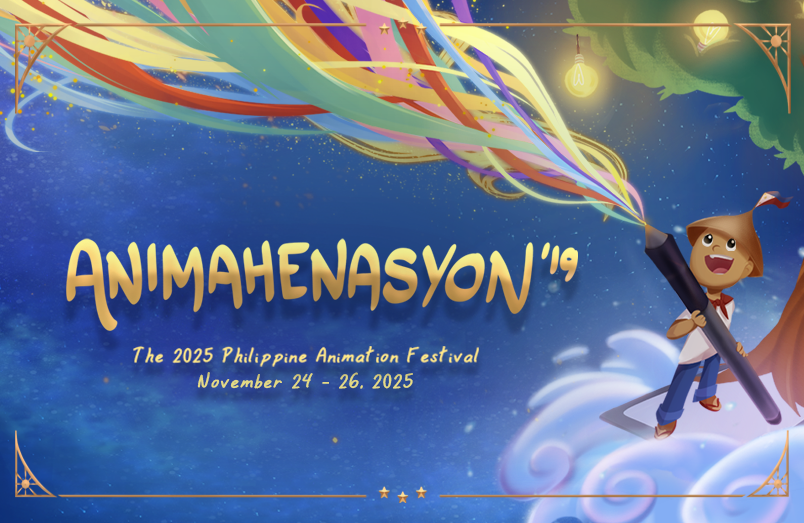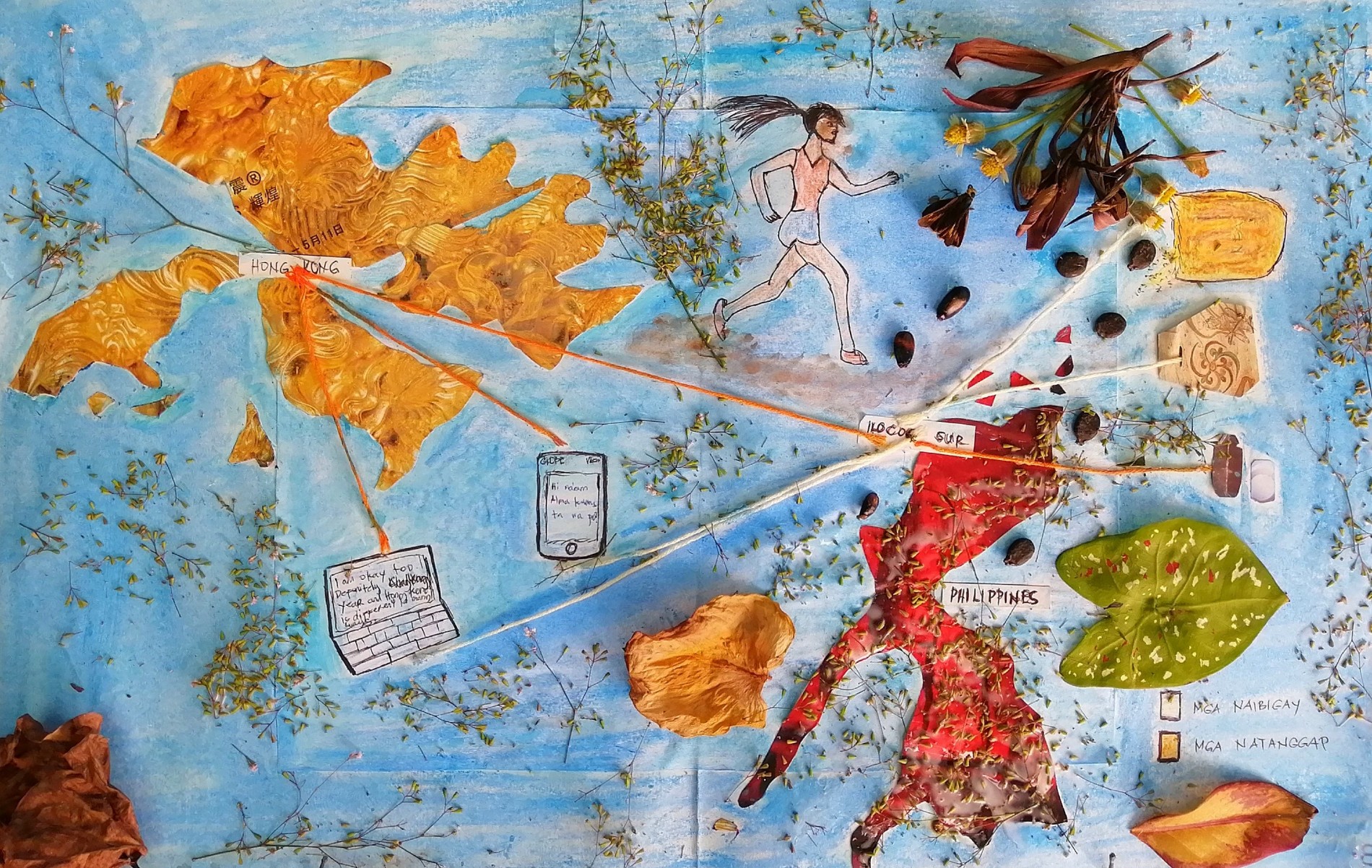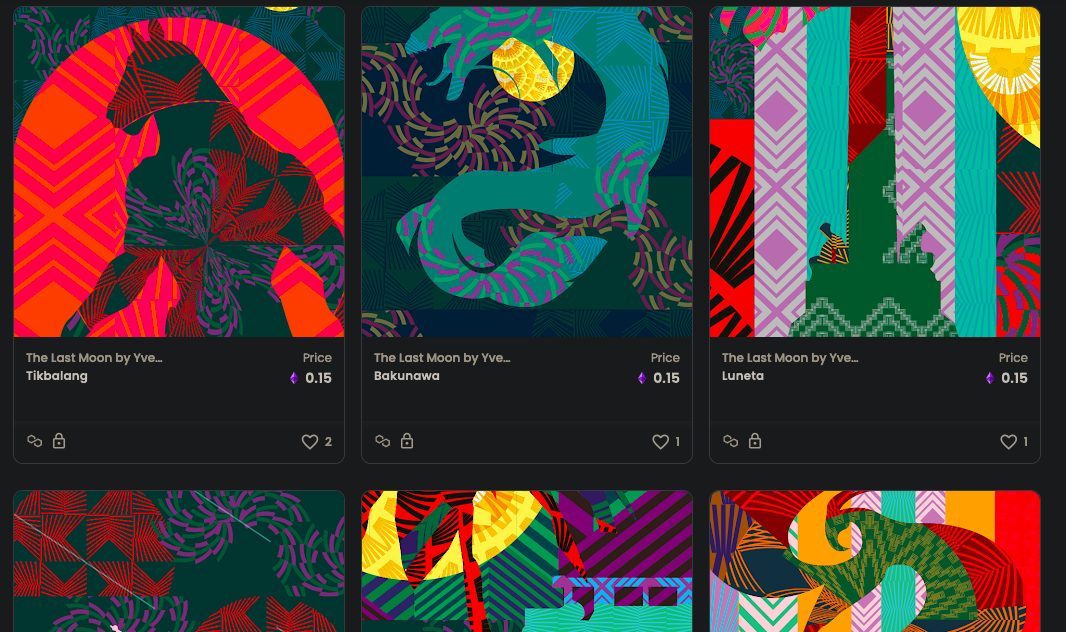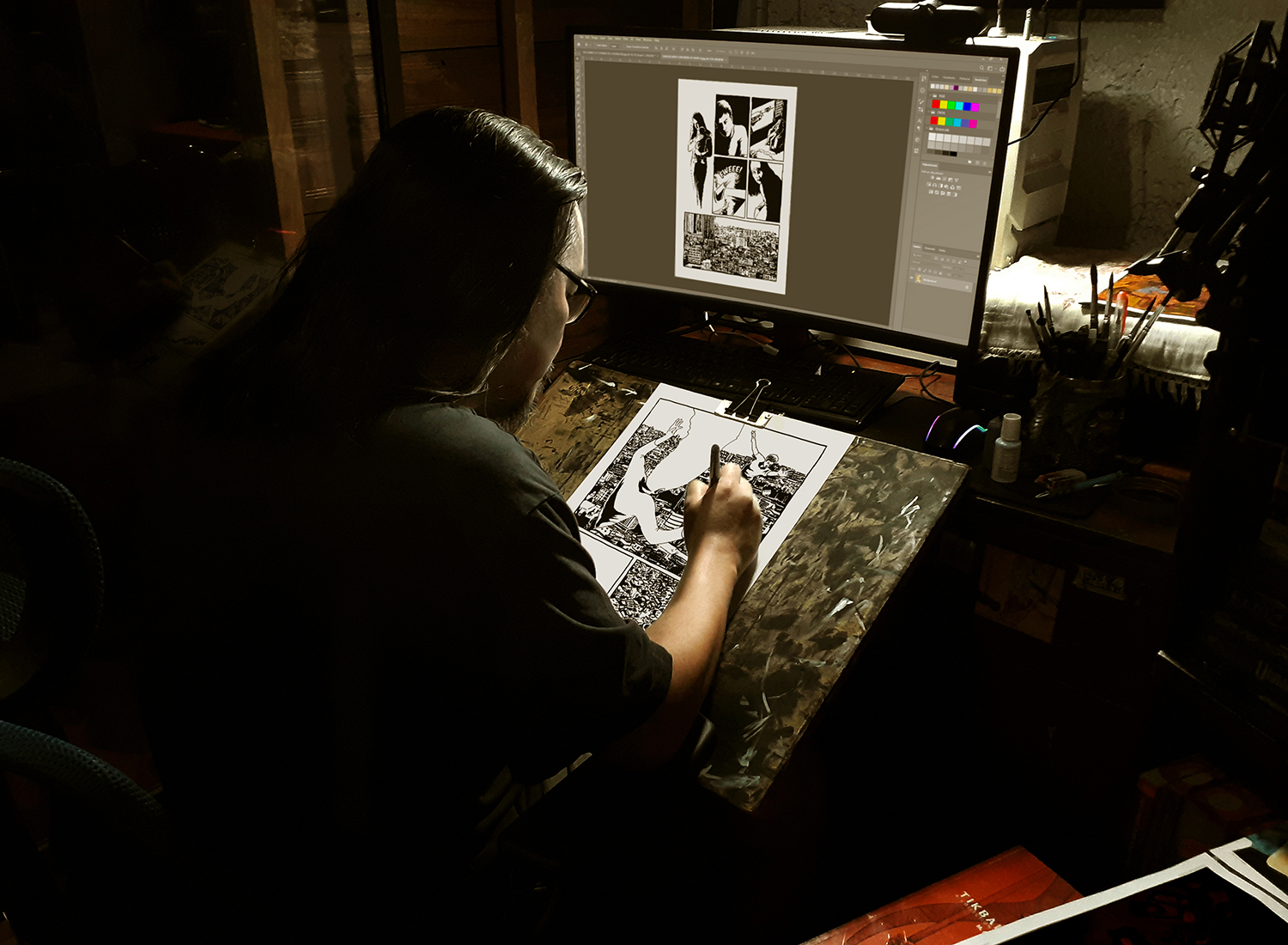
Comic book creation is serious business
Writer and artist M.A. Del Rosario believes that now is the best time for Filipino graphic novelists and comic book creators to publish their work
By September Grace Mahino
April 15, 2025
For storyteller M. A. Del Rosario, his love for drawing came before his passion for writing.
Weaned on Saturday morning cartoons, he would make doodles of superheroes, particularly the Christopher Reeve-era Superman, getting into all sorts of adventures. “I didn’t understand then that what I was doing was sort of creating comics,” he says. Meanwhile, he credits his penchant for myth-making and lore-telling to reading The Hobbit and Dungeons and Dragons during his youth. The latter, in particular, was what awakened his drive to write. Together with a couple of friends, including Philippine comic book icon, the late Gerry Alanguilan, Del Rosario formed a group of fellow comic book heads. “I was studying fine arts and advertising then, and that’s when my interest in comic books really grew. My friends and I studied how comic books are made, how scripts are written so there’s a flow to the story, how paneling is done.”
It was a protracted period of self-study, and looking back, Del Rosario wouldn’t have it any other way. “The more we read, the more we understood how a comic book story should flow,” he explains. He’d pore over his growing collection of foreign and local titles, picking up ideas on how to make storytelling exciting, not just in terms of textual narrative but also visually. “There really weren’t any rules before in terms of properly creating a comic book. Scripting does, yes, but sometimes, the artist is allowed to treat the script the way they want or need to for the comic to be dynamic.” Del Rosario and his friends would also discuss the differences between the US and Philippine scenes—specifically, how artists in the latter are expected to be more by the book—and between mainstream and independent artists. “We talked about the way they work: How did Dave Sims (of Cerebus) and Stan Lee create their characters? How did the late Alfredo Alcala (creator of Voltar) develop his dynamic style?” Emulating his favorite artists, Del Rosario sharpened his craft by trial and error.
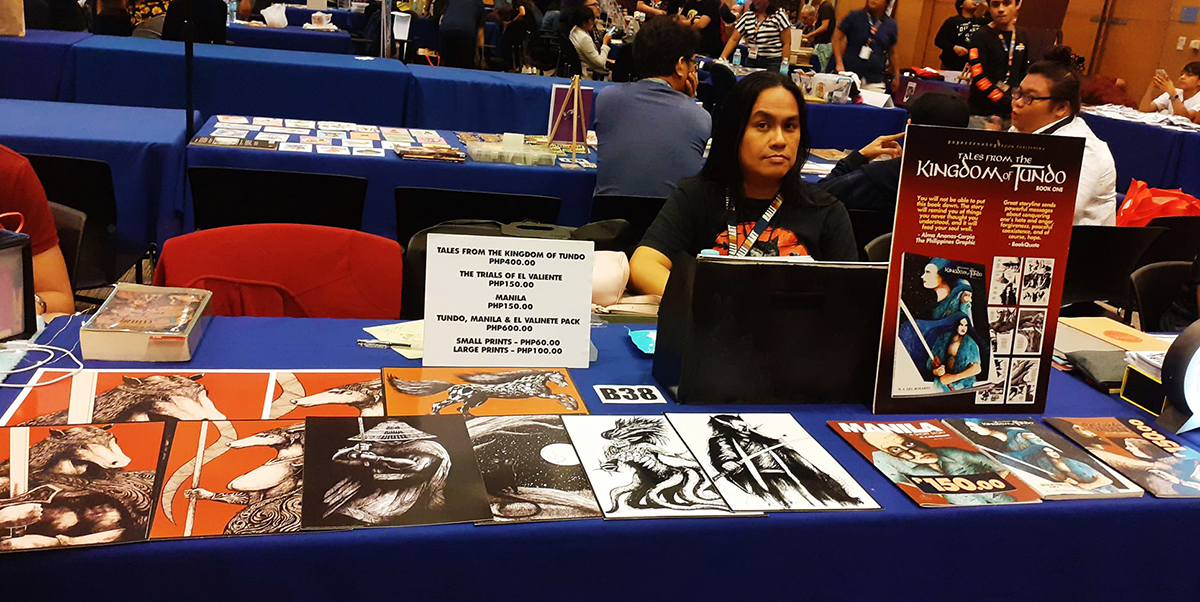
Although he had to put comic book-making aside once he started working in advertising, the call of storytelling proved difficult to ignore for long—specifically, creating and telling Filipino stories. Sometime in 2013, he met with his friend, writer Ricky Olivares, and a few other people to go to comic conventions, then in 2015, he joined the local annual comic book convention Komikon, this time as an indie author. Selling his work revived his interest in the medium, not just as a collector but also as a creator. “I thought then, ‘I should continue this.’”
Today, Del Rosario is a graphic novelist with four published titles under his belt and a million more stories percolating in his head. Kingdom of Tundo, his first book, tells the tale of a land where tikbalangs and kapres coexist. “I released that [as a series] until 2019 and collected it as an omnibus until the pandemic.” In 2020, American publisher Rogue Matter discovered the novel and bought the rights to publish it in the US. “It was first published there as a series of floppies or magazine-type comic books, then as a graphic novel.”
Del Rosario says that his work revealed the richness of Philippine mythology to his American publisher. “They were really impressed by and surprised about it. I was like, yes, of course, we have hundreds of myths and legends because we have hundreds of ethnic groups, each one with their own language and pantheon.”
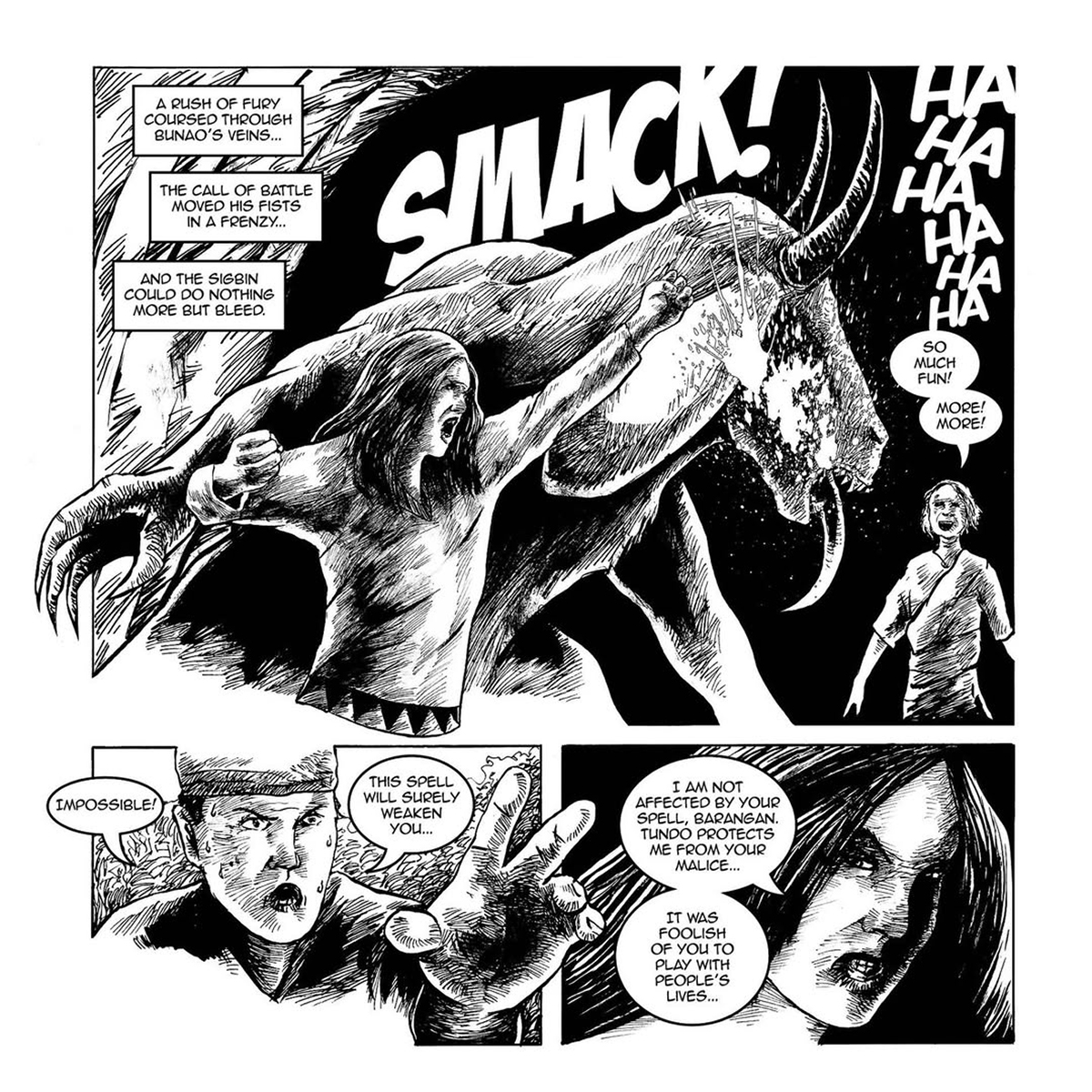
After finishing Kingdom of Tundo, Del Rosario started working on Gods of Manila, a comic book that was published just before the pandemic hit. It is based on his first short story “Manila,” which first appeared in Philippine Graphic in 2007 and is now included in Gods of Manila’s first volume. Tikbalang soon followed, a collection of short stories that was published in late 2020. Gods of Manila and Tikbalang are currently showcased in the Leipzig Book Fair and the Frankfurter Buchmesse in Germany, through the support of the National Book Development Board (NBDB) of the Philippines. “I’m really proud of that,” he shares.
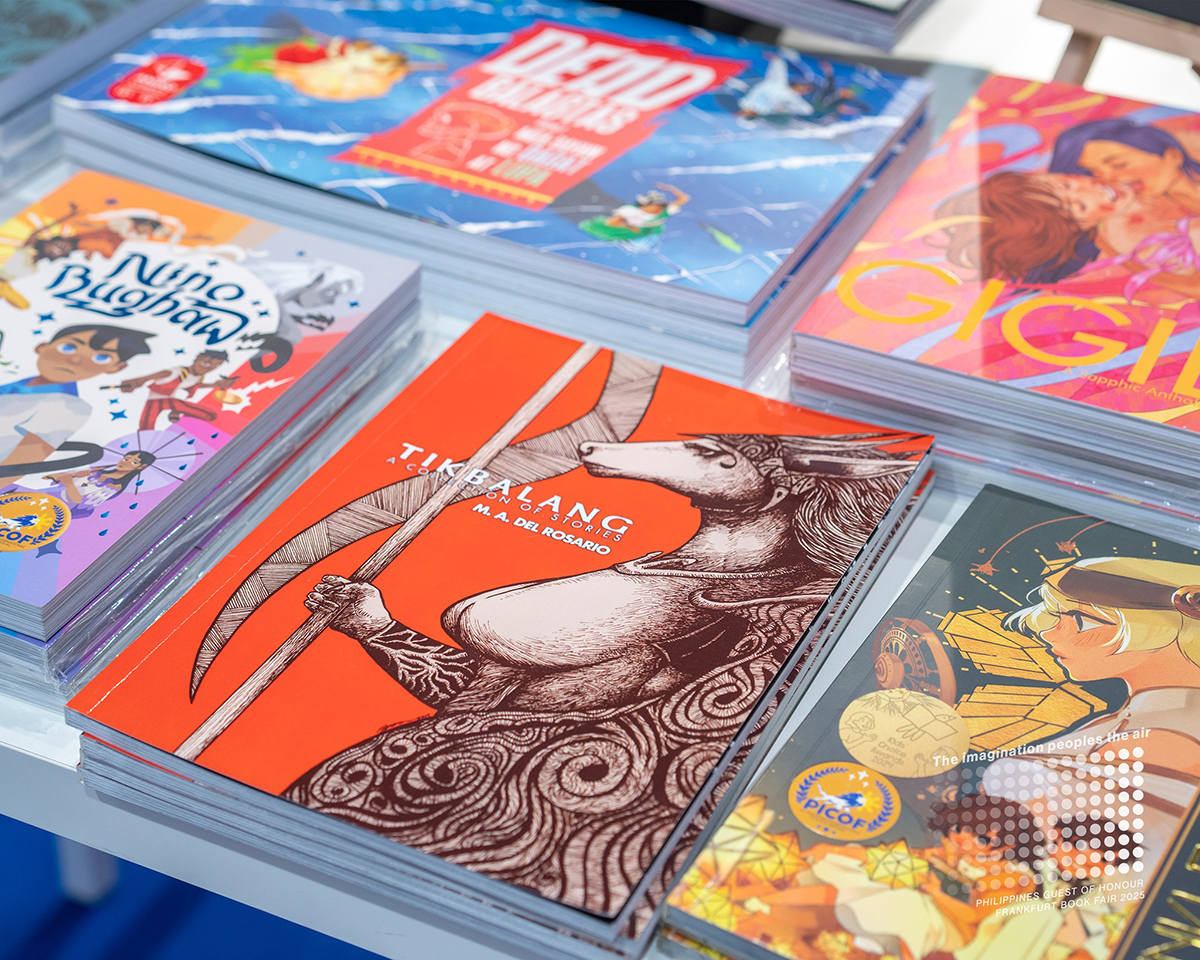
Decades after he had started his creative journey, Del Rosario now sees more opportunities and greater viability for aspiring Filipino comic book artists to establish a name and a career. “There are plenty of self-publishing avenues they could get into, like webtoons,” he says. There’s also a bigger interest in Filipino comic book content, boosted by the pandemic. Tikbalang, for example, sold well online, with the public searching for original content to enjoy while they were locked down at home. “Trese (by Budjette Tan and Kajo Baldisimo), which became even more popular after the Netflix adaptation, helped a lot, too, in boosting the attention on Filipino-made content,” he points out.
There are independent publishers looking to boost the Filipino comic industry as well, such as Komiket, which, aside from publishing local authors and holding comic book conventions, also works with the NBDB to bring Filipino works to international book fairs. Another one is Paper Kat Books, with whom Del Rosario has partnered. The company recently opened distribution deals for more authors. “It’s no longer an issue of printing and selling, but whether you can get people interested in your story. If yes, then selling your work is really possible.”
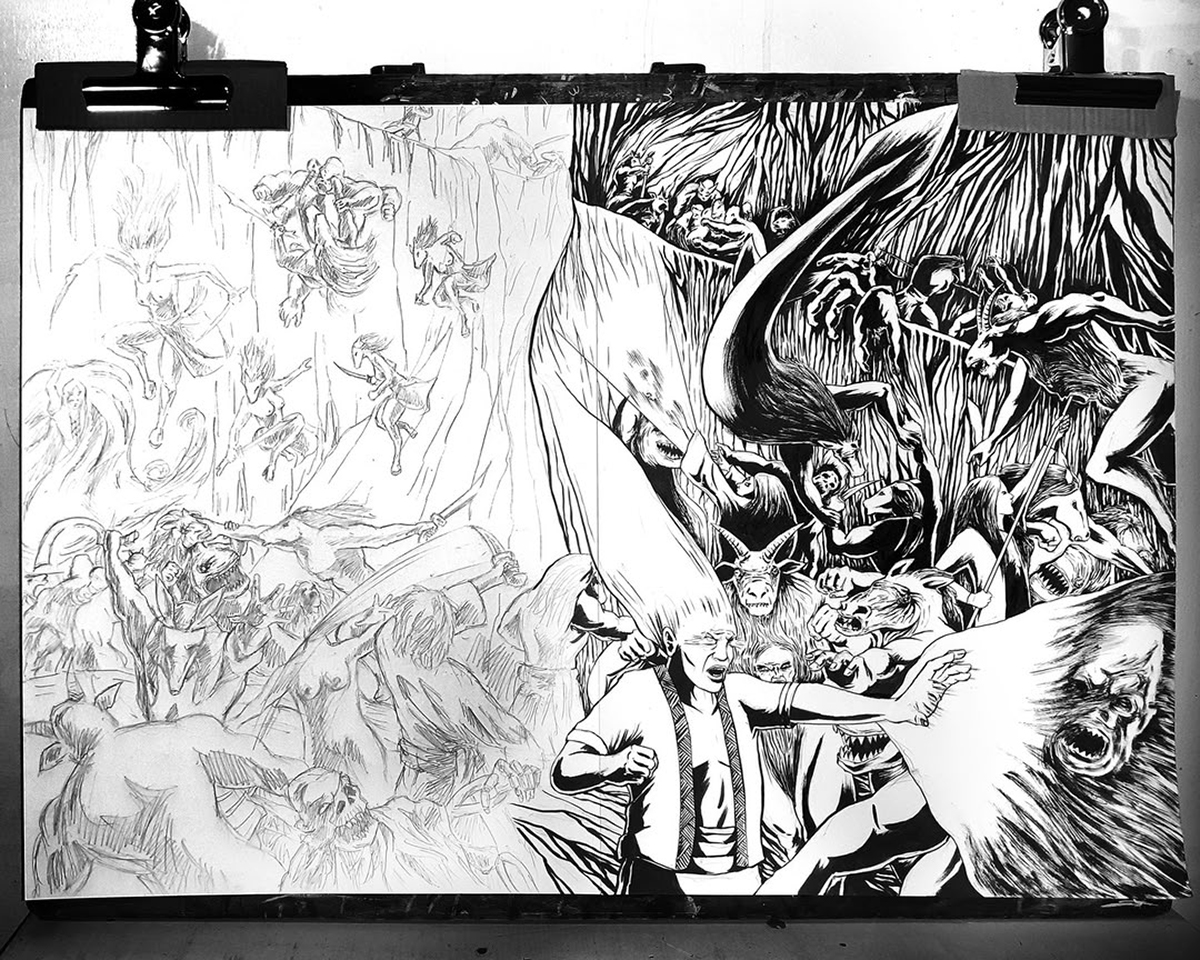
Aside from his day job as a designer for a US-based publication, Del Rosario is currently busy finishing Introspection, a collection of short stories that merges fantasy and horror with the more philosophical theme of self-discovery. He’s also working on Gods of Manila Volume II, plus a fantasy novel that he hopes will receive a grant from NBDB.
When asked what aspiring comic book creators can do to build a career as prolific as his, he says, “It’s all trial and error, especially if you’re just starting. I started with drawing then writing short prose and experienced a lot of rejections. So I want them to ask themselves, ‘Am I really passionate about what I’m doing?’ Because it’s hard to do something just for the sake of doing it. Create for yourself, and have fun doing it.”
***
Discover more of M.A.’s work by visiting his website Paper Drawing Studio and following him on Instagram @paperdrawingstudio. Check out his profile as well on CREATEPhilippines. All images in this story are courtesy of M.A. Del Rosario.
Want to connect with M.A.? Get in touch with CREATEPhilippines by emailing us at [email protected]. Want to be part of our creative community and have the chance to be featured on CREATEPhilippines, too? Sign up and register for our Directory of Creatives here.

